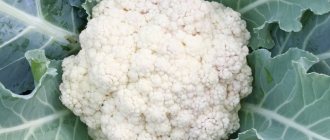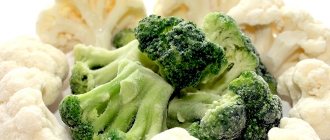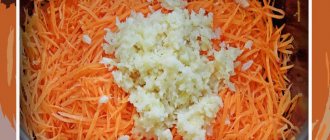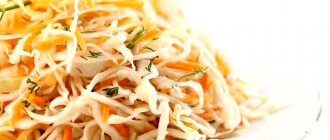Many people prefer white cabbage, undeservedly ignoring red cabbage. In fact, red cabbage has many times the nutritional value of its “closest sister.” The vegetable is incredibly healthy and tasty, has an attractive appearance and a pleasant aroma. It can be consumed both raw and processed.
What are the benefits of red cabbage, and can the vegetable cause harm? Why do nutritionists recommend introducing it into your daily diet? And what are the recipes for red cabbage? Let's figure it out.
Peculiarities
The homeland of this beautiful vegetable is the Mediterranean countries. For many centuries, vegetable crops have been valued not only for their taste, but also for their beneficial properties. It was used both for preparing delicious dishes and for medicinal purposes. The vegetable came to Russia at the end of the 19th century, and immediately attracted the attention of the dense, small heads of cabbage of unusual color. Cabbage remains juicy for a long time, is stored well all winter, and does not lose its beneficial properties over time.
The product is popular in all countries of the world. Mainly used in the preparation of fresh salads, it goes well with many ingredients. It is also added when preparing main courses, vegetable stews, and casseroles. Cabbage is fermented, pickled, and used to decorate dishes. It is also used as a natural food coloring in the preparation of dough, creams, and sauces.
Calorie content, composition
Red cabbage contains the maximum amount of fiber and consists of 90% water. The product is indispensable in dietary nutrition. Its nutritional value is twice that of regular cabbage. This is a real storehouse of useful substances.
Includes:
- potassium;
- vitamins K, A, group B, PP, C;
- iron;
- magnesium;
- calcium;
- selenium;
- phytoncides;
- anthocyanin.
The calorie content of 100 grams of product is only 31 Kcal.
Calorie content and composition of red cabbage
Red cabbage contains 15 vitamins and 10 essential amino acids, which must be included in your daily diet, since they cannot be synthesized, but they play an important role in strengthening the body.
The calorie content of red cabbage is 31 kcal per 100 grams of product, of which:
- Proteins - 1.43 g;
- Fats - 0.16 g;
- Carbohydrates - 7.37 g;
- Dietary fiber - 2.1 g;
- Water - 90.39 g;
- Ash - 0.64 g.
Vitamins per 100 g:
- Vitamin A, RE - 56 mcg;
- Beta Carotene - 0.67 mg;
- Lycopene - 20 mcg;
- Lutein + Zeaxanthin - 329 mcg;
- Vitamin B1, thiamine - 0.064 mg;
- Vitamin B2, riboflavin - 0.069 mg;
- Vitamin B4, choline - 17.1 mg;
- Vitamin B5, pantothenic acid - 0.147 mg;
- Vitamin B6, pyridoxine - 0.209 mg;
- Vitamin B9, folate - 18 mcg;
- Vitamin C, ascorbic acid - 57 mg;
- Vitamin E, alpha tocopherol, TE - 0.11 mg;
- Vitamin K, phylloquinone - 38.2 mcg;
- Vitamin RR, NE - 0.418 mg;
- Betaine - 0.1 mg.
Macroelements per 100 g:
- Potassium, K - 243 mg;
- Calcium, Ca - 45 mg;
- Magnesium, Mg - 16 mg;
- Sodium, Na - 27 mg;
- Phosphorus, Ph - 30 mg.
Microelements per 100 g:
- Iron, Fe - 0.8 mg;
- Manganese, Mn - 0.243 mg;
- Copper, Cu - 17 μg;
- Selenium, Se - 0.6 μg;
- Zinc, Zn - 0.22 mg.
Digestible carbohydrates per 100 g:
- Mono- and disaccharides (sugars) - 3.83 g;
- Glucose (dextrose) - 1.74 g;
- Sucrose - 0.6 g;
- Fructose - 1.48 g.
Essential amino acids per 100 g:
- Arginine - 0.083 g;
- Valine - 0.048 g;
- Histidine - 0.024 g;
- Isoleucine - 0.034 g;
- Leucine - 0.046 g;
- Lysine - 0.049 g;
- Methionine - 0.014 g;
- Threonine - 0.039 g;
- Tryptophan - 0.012 g;
- Phenylalanine - 0.036 g.
Essential amino acids per 100 g:
- Alanine - 0.048 g;
- Aspartic acid - 0.136 g;
- Glycine - 0.034 g;
- Glutamic acid - 0.329 g;
- Proline - 0.054 g;
- Serine - 0.059 g;
- Tyrosine - 0.022 g;
- Cysteine - 0.012 g.
Fatty, saturated fatty, monounsaturated and polyunsaturated acids per 100 g:
- Omega-3 fatty acids - 0.045 g;
- Omega-6 fatty acids - 0.035 g;
- Lauric acid - 0.001 g;
- Myristic - 0.001 g;
- Palmitic – 0.019 g;
- Stearic – 0.001 g;
- Oleic (omega-9) - 0.012 g;
- Linoleic acid - 0.034 g;
- Linolenic – 0.045 g;
- Arachidonic acid - 0.001 g.
Red cabbage contains glucosinolates, which give it a slightly spicy taste.
They can also be found in radishes, horseradish, watercress seeds and mustard, all of which have similar flavor profiles. But these elements are responsible not only for the taste of the vegetable: when they enter a living organism, they begin to disintegrate and “work” as an antioxidant at the cellular level. The leaves of this type of cabbage contain anthocyanin, a natural dye, due to which the cabbage received the name “red cabbage”.
You can also find a large amount of vitamin K in blue cabbage: 100 grams of the product contains 124% of the daily value, vitamin C - more than half the daily value. By consuming 100 grams of raw red cabbage in the morning, you can almost completely cover the body’s need for silicon for the day.
Beneficial properties of red cabbage
It is recommended to consume the vegetable not only raw, but also processed. Due to its low calorie content, daily consumption is recommended for obesity.
What are the benefits of this vegetable for the body:
- nutritionists recommend including vegetables in the diet as a preventive measure against infection with infectious, viral, and bacterial diseases;
- It has been proven that the vegetable helps in the treatment of inflammatory diseases, relieves swelling, eliminates pain in joints and muscles;
- in fermented form - an irreplaceable source of vitamin C and a natural broad-spectrum antibiotic;
- due to the high content of macro and microelements, the body’s defenses are increased and the immune system is strengthened;
- the product is a natural probiotic that normalizes digestive and metabolic processes, restoring the disturbed balance of intestinal microflora;
- prevents the development of bone diseases;
- cabbage is useful for Huntington's, Alzheimer's, and Parkinson's diseases;
- an effective preventative against the development of cancer (especially useful for those who have a predisposition to breast cancer);
- has long been used in the treatment of pulmonary diseases, including tuberculosis (cabbage juice helps with pneumonia and bronchitis);
- Regular consumption normalizes cholesterol levels, pH and blood sugar levels, and improves hematopoietic processes;
- the substance anthocyanin strengthens the heart muscle, blood vessels, protects against radiation;
- normalizes blood pressure;
- activates the activity of the thyroid gland;
- the juice has wound-healing properties;
- vision improves, the risk of developing cataracts and glaucoma decreases.
Interesting fact! In the old days, red cabbage was consumed before large feasts. This helped the body cope with the digestion of food without the consequences of unpleasant symptoms.
And now the vegetable is considered a universal folk remedy in the treatment of numerous diseases.
Description
The structural structure, taste and appearance of the vegetable is the same as that of white cabbage. The only difference is the chemical composition and color of the vegetables. The harvested heads of this crop are red or purple in color, which is why it is called red cabbage.
Compound
Red cabbage has a much richer chemical composition. Garden beauty contains vitamins and minerals necessary for human health. Not all varieties of this vegetable have such a balanced composition of nutrients:
- all B vitamins;
- vitamins PP, A, E, C, H.
Red cabbage (or purple cabbage) contains a large dose of iron, potassium, calcium, sodium and magnesium. These vital micronutrients are extremely important for the health of both women and men.
According to the biological description, the culture has unique properties:
- useful for children and recommended for use from 1 year of age;
- contains a daily dose of vitamin C and, when consumed regularly, replenishes its deficiency;
Energy value
The calorie content of the product is very low. 100 g contains 23 kcal, so red cabbage can be safely included in your diet. BJU ratio: high dose of protein and low fat and carbohydrates.
Use in folk medicine
The beneficial properties of red cabbage are manifested not only in dietary dishes, but also when used externally:
- For bronchitis, a warm decoction of purple cabbage is effective. To prepare it, finely chop 100 g of leaves and pour in 200 g of boiling water. After an hour, the broth is filtered and divided into 3 parts. Take the medicine warm, 3 times a day, until complete recovery.
- For thrombophlebitis, the leaves are used as a compress. They are smeared with dead bees, applied to problem areas, fixed with a bandage and left for 1-2 hours.
- To improve the condition of your facial skin, use a blue cabbage decoction to wash your face. To prepare the decoction, pour 1 part of chopped cabbage leaves into 2 parts of boiling water and leave for an hour. The finished broth should be filtered and cooled.
Application
Polyphenols dissolve easily in water, causing cabbage to lose its red color. To avoid this, you can add a little vinegar during the cooking process. It is better to cook in a small amount of boiling water, and reduce the cooking time if possible.
The healthiest benefits are raw red cabbage in salads or steamed. It is also boiled and stewed with vegetables and meat.
Market Analytics
- COVID-19 is changing the rules of the game in the cosmetics market
- Beauty of the future: cosmetic innovations 2020
- New ingredients are the driving force of the cosmetics industry
Convenient search for beauty salons on our website
Beauty salons in Moscow Beauty salons in St. Petersburg Beauty salons in Ekaterinburg Beauty salons in Novosibirsk
Latest blog posts on our website
- Naturecream / Geranium (Pelargonium) oil for skin health and beauty
- Prostye-sovety / Save on a beauty salon: procedures that can be done at home
- Naturecream / Growth Factor - brings back youth?
- Oksana-Lezina / 3 effective abdominal exercises from a fitness instructor for beginners
- Prostye-sovety / Making perfect curls at home
- Prostye-sovety / Which hair removal method to choose
- Naturecream / Wrinkles Puppets
- Naturecream / PEPHA-TIGHT - instant skin lifting
- Naturecream / Blue light - a danger to the skin
- Naturecream / Cocoa Butter – A treat for the skin
Latest forum topics on our website
- Mrs._Smith / Badly sunburned! What to do?((
- Ice / Is it necessary to combine fitness classes with a diet?
- Antonova / What can be used for hair loss?
- Radio operatorKat / Who was on a protein diet?
- Suzanna / Mesotherapy on the face
Other articles in this section
| Patisson Patisson is a type of zucchini. Its round, flattened shape with curly edges resembles a plate. The color varies from white to light green and the taste is similar to zucchini. Patisson is a very ancient crop; it began to be grown in Mexico more than 5 thousand years ago. This vegetable was very popular among the indigenous population of South America and was included in the daily diet. The name comes from the French word patisson, which means a cake baked in a pan with scalloped edges. |
| Radishes Radishes belong to the cruciferous family. This small, bright pink root vegetable begins to bear fruit in the spring. Radishes are early-ripening vegetables; several harvests can be harvested in one season. It has an easily recognizable pungent taste. |
| White radish White radish is a juicy, oblong-shaped root vegetable with a pronounced pungent taste. Belongs to the cruciferous family and is a relative of cabbage, radishes, and broccoli. Not only the root vegetable is eaten, but also radish tops, flowers and seeds. This vegetable crop has been known for its healing properties since ancient times. In Asian countries, varieties of white radish such as daikon and Chinese (Margelan) radish are common. |
| Purple carrots The variety of orange carrots was developed in Holland only in the 17th century. Before this, they grew carrots that were dark purple, almost black. This color is due to the high concentration of anthocyanins - nutrients that are extremely beneficial for health. |
| Broccoli Broccoli belongs to the cruciferous family and is the closest relative of cauliflower. The homeland of broccoli is in Italy, where this crop was developed during the Roman Empire from wild kale. The name comes from the Latin word broccolo, which means "offshoot", given because of the tree-like structure of this cabbage. |
| Artichoke Artichoke is a vegetable plant of the Asteraceae family. Its homeland is the Mediterranean region, where the healing properties of the artichoke have been known for several thousand years. Distributed in Southern Europe, North Africa and the Canary Islands. The artichoke is a scaly bud 6-10 cm in diameter, weighing about 150 g. The most delicious part is the core, which is hidden under the petals. |
| Pumpkin The homeland of pumpkin is the American continent. The nutritional value and medicinal properties of pumpkin seeds were known to the ancient Indian tribes, the Aztecs. In the Middle Ages, colonialists brought pumpkin seeds to Europe. In some Eastern European and Mediterranean countries (especially Greece), pumpkin and pumpkin seeds have become so popular that they have become part of the everyday diet. Pumpkin fruits vary greatly in shape and size. The average weight is 4-6 kg, but there are pumpkins weighing up to 25 kg. |
| Garlic (arrows) Green shoots of garlic are usually called arrows. They resemble green onions. As the garlic shoots grow, they twist, forming 2-3 loops. Then flowers appear at the end. If fresh heads of garlic can be found at any time of the year, then green arrows are considered an early summer delicacy. Later they acquire a harsh, “woody” taste. |
| Tomato (tomato) Although the tomato is considered a vegetable, it is actually a fruit. It is believed that the homeland of the tomato is in Mexico, and in the Middle Ages the Spaniards brought it to Europe. Currently, tomato is an essential component of a huge number of Mediterranean dishes. This is an annual plant of the nightshade family with round fruits of a sweetish taste. The most common tomatoes are red, but yellow, orange, black, and pink are also grown. There are several thousand varieties of tomatoes around the world. |
| Elecampane According to ancient Greek legend, elecampane owes its Latin name (Inula Helenium) to Helen of Troy. Where her tears fell, this medicinal plant grew. The ancient Greeks and Romans considered elecampane a panacea for many diseases. The plant reaches a height of more than a meter, the flowers resemble sunflowers, but are smaller in size. Grows in Europe, Asia, North America. |
Red cabbage during pregnancy
Red cabbage can be consumed during pregnancy provided there is no individual intolerance.
Thanks to the high content of ascorbic acid, the use of the product will help protect the expectant mother’s body from colds. Vitamin A and calcium will improve the condition of the skin, hair and teeth, which is very important during this period. And, of course, the rich chemical composition of red cabbage will have a positive effect on the healthy development of the baby's fetus.
Application in dietetics and weight loss
Red cabbage is rich in fiber, which makes it quite filling despite being low in calories. Eating this vegetable improves intestinal motility and prevents the development of constipation.
By normalizing the level of fluid in the body, cabbage reduces the unsightly manifestations of cellulite.
It often happens that various diets do not give the desired results due to insufficient intake of pyridoxine, which is found in red cabbage. It accelerates the course of biochemical reactions, which means it speeds up metabolism.
There are many diets based on red cabbage that help overweight people lose weight. But between them there are a number of general rules, adhering to which cabbage with lilac leaves will certainly bring benefits:
- The diet should be balanced. The menu should contain proteins, carbohydrates, and even fats.
- The cabbage mono-diet is contraindicated even for healthy people.
- If there are no health restrictions, then preference should be given to raw vegetables in the form of salads. Cabbage juice contains practically no plant fibers and fiber, which means it is significantly inferior in properties to salad.
- It is advisable to season the salad with a small amount of vegetable oil so that fat-soluble vitamins are better absorbed.
- To prevent excess fiber from causing digestive problems, you need to drink at least 2 liters of clean water per day.
- It’s a good idea to diversify your diet menu with a red cabbage smoothie with the addition of vegetables, fruits or berries.
Harm, contraindications
- individual intolerance;
- exacerbation of diseases of the digestive system;
- stomach ulcer;
- Crohn's disease;
- breastfeeding (can cause colic in the baby);
- children under 1 year.
Like any vegetable, blue cabbage can contain a lot of nitrates. To protect yourself from their influence, you should remove the top leaves from the head of cabbage and throw it away, and send the stalk there too. It is in it that nitrates and other harmful substances are concentrated.
What are the benefits of red cabbage?
Red cabbage has the following beneficial properties.
Contains powerful plant compounds
Red cabbage is an excellent source of antioxidants and other beneficial plant compounds that help protect cells from damage.
The antioxidants it contains include vitamin C, carotenoids and flavonoid antioxidants such as anthocyanins and kaempferol. In fact, it often contains more of them than white cabbage ().
For example, research shows that antioxidant levels in red cabbage are approximately 4.5 times higher than in white cabbage varieties (, ,).
Moreover, red cabbage is one of the foods that offers the highest levels of antioxidants per unit cost ().
It is also a good source of sulforaphane, a sulfur-rich compound associated with powerful heart health and anti-cancer properties (, ).
Summary:
Red cabbage is an excellent source of beneficial plant compounds and offers one of the highest amounts of health-promoting antioxidants per unit value.
Helps fight inflammation
Red cabbage may help fight inflammation, which is believed to contribute to many diseases.
One test-tube study using an artificial human intestinal model found that certain varieties of red cabbage reduced markers of intestinal inflammation by 22–40% ().
Animal studies suggest that the vegetable's sulforaphane () content is responsible for this anti-inflammatory property.
Interestingly, applying cabbage leaves to the skin also reduces inflammation.
For example, adults with arthritis who wrapped cabbage leaves around their knees once a day reported feeling significantly less pain at the end of the four-week study period. However, cabbage wrap reduces pain less effectively than topical pain gel ().
In addition, kale leaves appear to reduce breast pain, swelling and inflammation by increasing milk supply and circulation in the early postpartum period ().
Summary:
Red cabbage may help fight inflammation and reduce associated symptoms such as pain, swelling and discomfort.
May Promote Heart Health
Red cabbage may also benefit your heart.
This may be due to the anthocyanins it contains, which are flavonoid antioxidants that give purple cabbage its characteristic color ().
One large study found that women who regularly ate large amounts of anthocyanin-rich foods had an 11–32% lower risk of heart attacks compared to those who ate fewer of these foods (, ).
Higher anthocyanin intake may also be associated with lower blood pressure and a lower risk of cardiovascular disease (, ).
Red cabbage contains more than 36 types of anthocyanins, making it an excellent source of this heart-healthy compound ().
Summary:
Red cabbage is a rich source of anthocyanins, which are beneficial plant compounds that may reduce the risk of heart disease.
May strengthen your bones
Red cabbage contains several bone-healthy nutrients, including vitamins C and K, as well as small amounts of calcium, manganese and zinc ().
For example, a 90-gram serving of raw purple cabbage contains about 56% of the RDA for vitamin C, which plays a role in bone formation and helps protect your bone cells from damage (,).
Red cabbage is also rich in vitamin K1, offering just over a quarter of the RDI for the same serving size (90 grams) ().
Vitamin K1 is mainly found in plant foods such as green leafy vegetables and cruciferous vegetables. This distinguishes it from vitamin K2, which is found in animal products and fermented foods.
There is evidence that both forms of vitamin K play a role in maintaining strong, healthy bones, although more research is needed to pinpoint the specific effects of each ().
Summary:
Red cabbage is rich in vitamins C and K1, which are essential for building and maintaining strong, healthy bones. This vegetable also contains lower amounts of bone-healthy nutrients such as calcium, manganese and zinc.
May protect against some types of cancer
Red cabbage may help protect against some types of cancer, although more research in humans is needed.
Experts believe this may be due to the fact that it contains sulforaphane and anthocyanins, two compounds studied for their anti-cancer properties.
Research has linked high consumption of cruciferous vegetables, including kale, to an 18% reduced risk of colon cancer. Diets rich in cruciferous vegetables have also been associated with a lower risk of breast cancer (, ).
What's more, there is evidence that sulforaphane, found in red cabbage and other cruciferous vegetables, may help kill cancer cells or prevent them from growing and spreading ().
Cell and animal studies suggest that anthocyanins may have similar anti-cancer effects. Anthocyanins are found in red, purple and blue fruits and vegetables, including red cabbage ().
However, more in-depth research is needed before conclusive conclusions can be drawn.
Summary:
Red cabbage contains beneficial compounds such as sulforaphane and anthocyanins, which may help protect your body from certain types of cancer. However, more research is needed to explore these effects.
May improve gut health
Red cabbage may improve your bowel function.
There is evidence that cabbage can reduce inflammation in the gut and reduce intestinal mucositis, a condition in which lesions develop in the intestines, often as a side effect of cancer therapy (, ,).
Cabbage is also a good source of fiber, which keeps your gut healthy and helps you digest food more easily.
Insoluble fiber makes up about 70% of the fiber in kale. It increases stool bulk and helps food pass through the intestines more easily, reducing the risk of constipation (,).
The remaining 30% is soluble fiber, which provides food for the beneficial bacteria that live in your gut. In turn, these friendly bacteria produce short-chain fatty acids (SCFAs) such as acetate, butyrate and propionate, which nourish your intestinal cells ().
Research shows that SCFAs may also reduce inflammation and other symptoms of bowel diseases such as Crohn's disease, irritable bowel syndrome (IBS), and ulcerative colitis (,).
There is also some evidence that drinking about 1 liter (950 ml) of cabbage juice per day may help heal intestinal ulcers in 7 to 10 days. However, the studies showing this are outdated, so more recent studies are needed to examine this effect (, ).
Summary:
Red cabbage can help improve your gut health by reducing inflammation, preventing intestinal damage, and healing ulcers. However, more research is needed to examine these effects.











